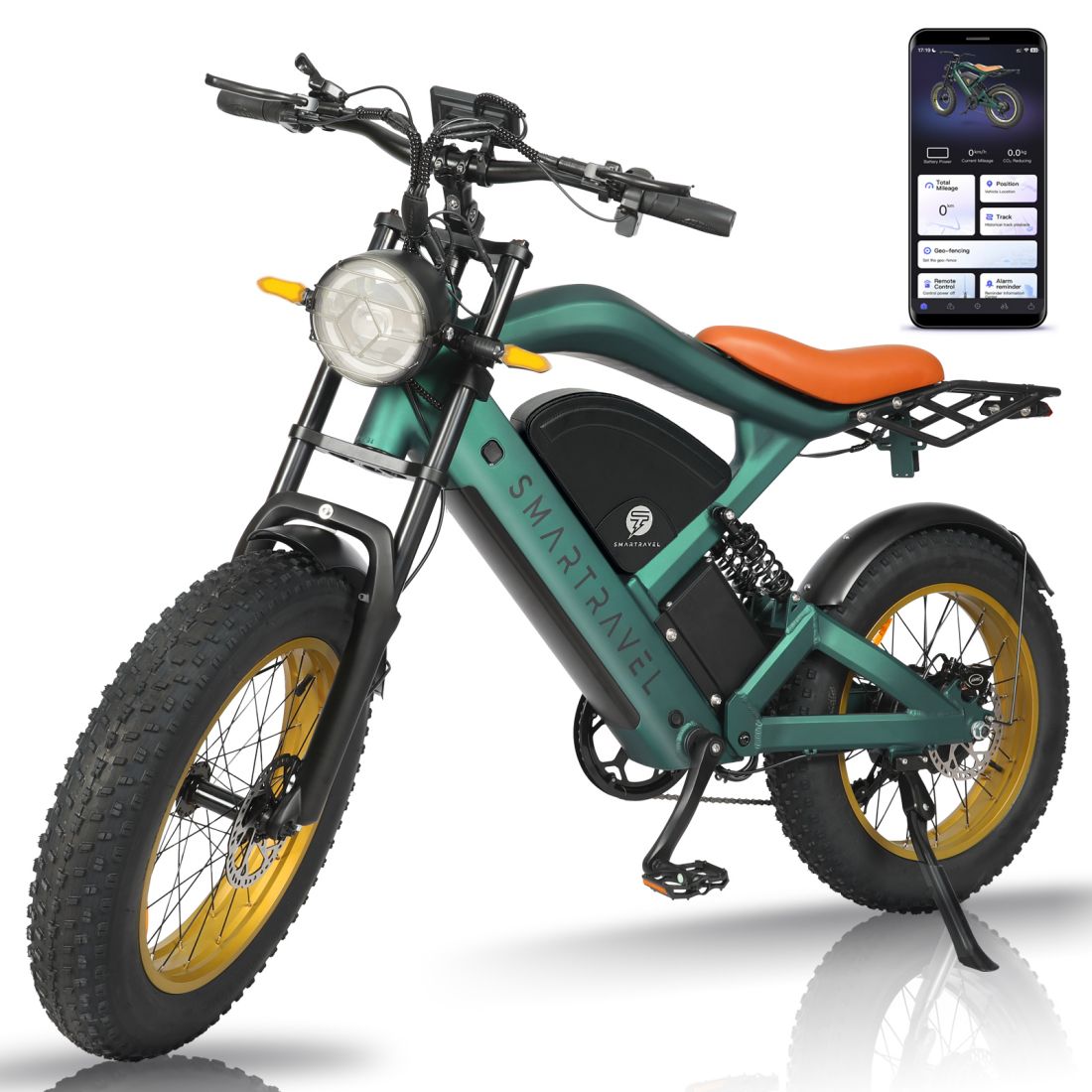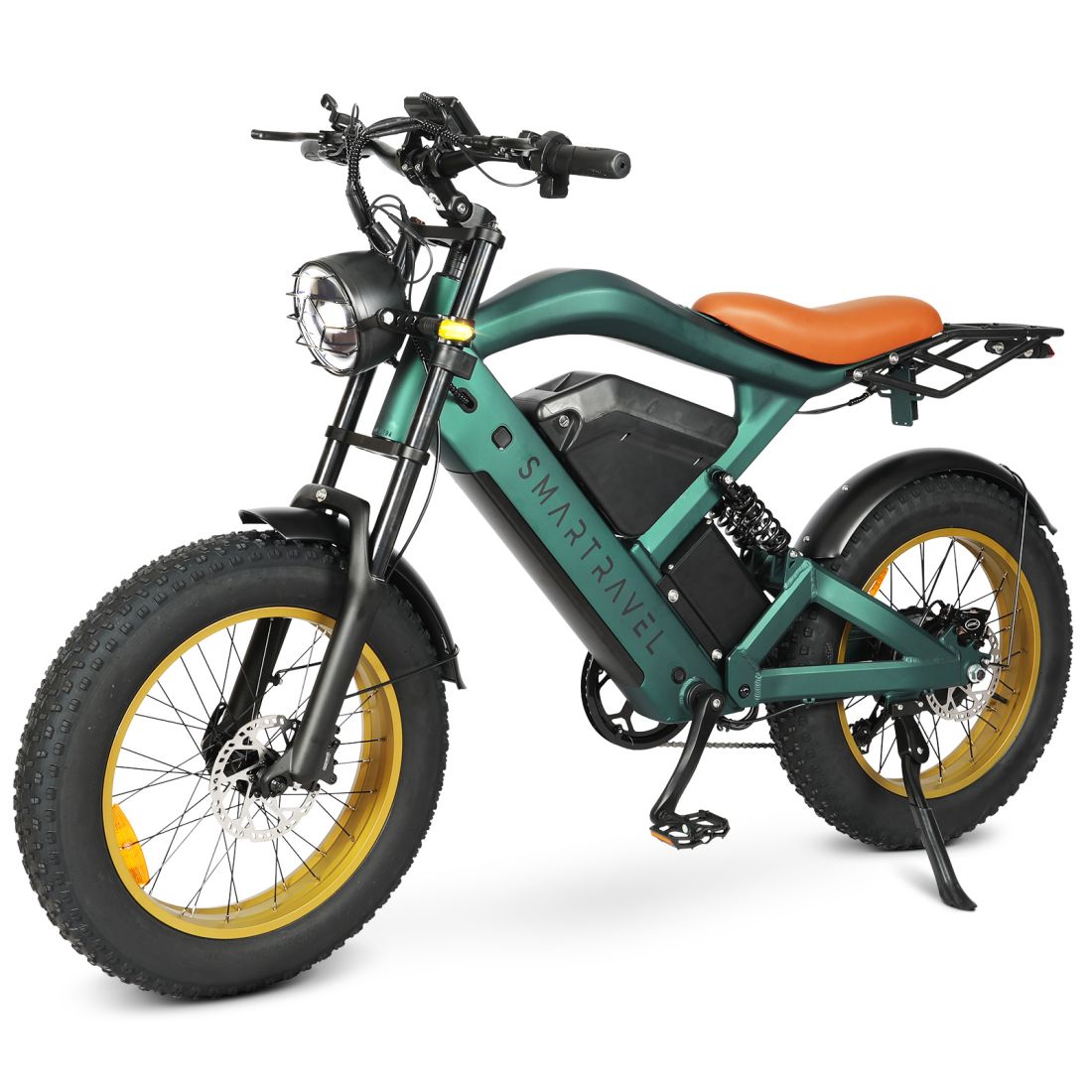How to Adjust Your E-bike to Fit Your Body

"Do you feel uncomfortable when riding?"
"Do you keep moving the seat up and down to find the best position?"
The answer from most people is "yes".
This is because, although most bicycles have adjustable seats, many riders don't know how to find the best position for their bodies. It's not just a matter of seat height, because a comfortable electric bike is the result of the adjustment of multiple components. Only when each component is adjusted well can you feel comfortable and safe riding.
Riding posture is important
The correct riding posture is a comprehensive consideration of all contact points of the whole body from head to toe. For mountain electric bikes, the three contact points of hands, hips and feet are very important. The palms should hold the handlebars relaxedly, and the elbows should be slightly bent, so that the vibration of the road can be better absorbed and the arm fatigue can be reduced. The width of the seat should be appropriate, not too narrow to affect support, nor too wide to affect riding stability. The hips should be relaxed and fit the seat. The pedals should match the size of the soles of the feet, the middle of the soles of the feet should be aligned with the center of the pedals, and the knees should be slightly bent to maximize the power of the legs.

Bike component adjustment
Seat height
Seat height is the most important element in bicycle setup, especially related to the knee joint and pedal power generation. A saddle that is too high can affect pedaling efficiency because excessive leg extension can cause muscle cramps and other problems. An excessively long power stroke can also negatively affect muscle elasticity and the ability to use the muscles' own stored energy. Most critically, a center of gravity that is too high can compromise safety.
On the other hand, a seat that is too low can cause muscle fatigue and reduce riding efficiency. The common formula for calculating the optimal seat height is: inseam length x 0.893 = distance from the center of the bottom bracket to the top of the saddle.
For most riders, when sitting on the bike, the legs should not be completely straight at the bottom of the pedal stroke, but should keep the knees bent about 25 degrees. If the rider sways back and forth on the saddle, the saddle is too high.
The most suitable saddle height is about 109% of the rider's inseam length, and finally some adjustments are made based on the thickness of the shoes worn.
Handlebar height
Adjusting the height of the handlebars needs to be coordinated with the height of the saddle. Generally speaking, the height difference between the handlebars and the saddle is within 5 cm. For mountain bikes, if the height difference is greater than 5 cm, the body will lean forward too much, the wrist will be under too much pressure, and it is easy to fatigue. So in order to maintain a comfortable posture, it is best to control the height difference within 5 cm as much as possible.
Recommended pedaling method
When pedaling a bicycle, it is better to use the heel, the middle of the foot or the forefoot. This problem has been a problem that many people have been unable to solve.
When pedaling with the heel, the ankle joint movement is limited, the foot and calf muscles cannot fully exert their strength, and long-term riding may cause wrist muscle cramps.
When pedaling with the middle of the foot, the wrist joint maintains a certain range of motion, and there is no need to deliberately maintain a specific ankle angle. It is relatively labor-saving, but it cannot fully mobilize all the leg muscles.
When pedaling with the forefoot, the strength of the leg muscles can be maximized, which is most suitable for long-distance riding and climbing, because the forefoot can generate greater propulsion.

In short, pedaling with the forefoot is the best riding posture, which can fully mobilize the leg muscles while keeping the wrist joint active for the best riding experience. Of course, different riding habits and needs may require corresponding adjustments to the position of the feet. The key is to find the pedaling style that works best for you.




















